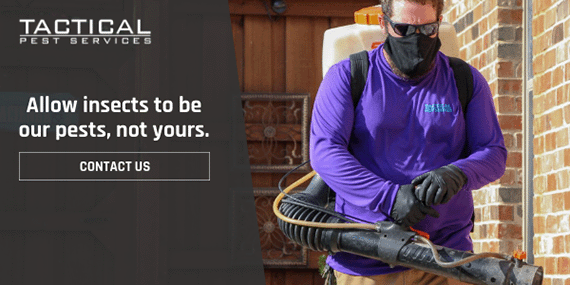Where Wasps Build Nests
If you see wasps frequently on or around your property, chances are that you have a wasp nest nearby. The big question is: where are the wasps building their nests? Usually, wasps will build nests in overhangs. Look under tree branches, along the edges of the roof or in sheds.
If you are having trouble finding the nest, we recommend spending time watching the wasps movements as they will usually be traveling to and from the nest. Their movements give you an idea as to what direction the nest is located in. Once found, we do not recommend approaching the nest, especially during the daytime when they are more active.
Identifying the Wasp Nest
If you can tell the type of wasp, that can help you tell how dangerous the species is. We have our full guide on wasp control here. We recommend keeping your eyes open in case the next has bald-faced hornets or yellowjackets.
Yellowjackets typically build their nests in cavities either within walls or beneath the ground. If the wasps look like they’re coming in and out of a small hole, they are most likely yellowjackets. Yellowjacket nests could contain thousands of wasps, so the next is larger than it may seem.
Bald-faced hornet nests are thin and papery. These nests are gray, and you can tell them apart from other wasps by its enclosed design. Most wasps nest take on an open cone structure, while bald-faced hornet nests are closed off.
Do Wasps Build Nests in Houses?
It is very possible for wasps to build nests inside houses. Houses, garages, and sheds can provide warm, dry areas that wasps will be drawn to. When inside a house, they tend to go into attics or the space between walls since those areas are usually dark and undisturbed. If they have access to a food source, such as any unsealed food, pet food, or garbage, they are more likely to take up residence inside the house.
If you see wasps crawling through a crack or hole in your house, do not seal up the entryway. That could leave wasps without an exit to the outside, resulting in a crowd of angry wasps chewing through wood. This can lead to both wasp attacks and property damage.
Wasps will also come into homes during the winter seeking a warm place to wait out the season. Once inside, wasps usually will not cause many disturbances. However, they will travel outdoors and will likely create a nest nearby when Spring comes around, leaving you with a fully grown nest during the Summer.
Aside from building homes, wasps can get in on their own and end up exploring the area for sources of food. Keeping food sealed will discourage wasps (and just about any other pest) from entering your home in the first place.
Wasp Control
Due to the severity of wasp attacks, Tactical Pest Control does not recommend trying to remove a wasp nest through a DIY method, especially if you or someone around you might be allergic to wasp stings. Please call us to keep yourself and your loved ones out of danger. If you still intend to do it yourself, please wear protective clothing, eyewear, long sleeves, pants, gloves, and a protective jacket.
We would be happy to take the risk off your hands when it comes to wasps nests. We offer residential pest control and recurring pest control services to make sure your home is protected for every season. Contact our Tactical Pest Services team today and we can assist with all your wasp control needs.


